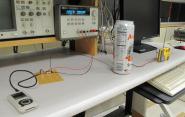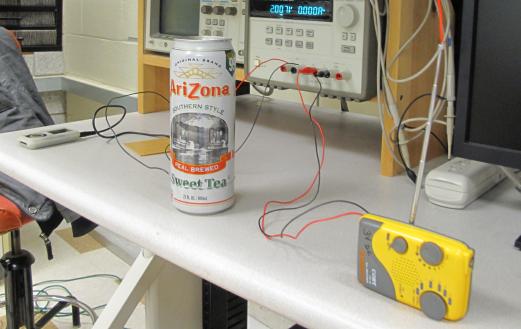Music in the Air—and in a Soda Can

A quiet strain of Mozart’s 40th Symphony echoes down the hallways of Dunham, emitted from a handheld AM radio receiver. But this particular radio signal is unique, having first been transmitted through an empty aluminum can of Arizona Tea.

This unusual radio transmitter is being built by students in EENG 203, a class co-taught this spring by associate professor of electrical engineering, physics, & applied physics Hong Tang and assistant professor of electrical engineering Fengnian Xia. For this lab, the students are building circuits that can receive a signal from an iPod then turn that signal into the equivalent of an AM radio station. That AM radio signal is sent out via antenna—which is where the aluminum can comes in.
“An antenna can really be just a piece of wire,” says research support specialist Kevin Ryan, who assists SEAS faculty with electronics and electrical engineering systems like those used in this lab. “But connecting that piece of wire to a can gives the antenna more surface area, thereby increasing the area and shape of the transmitted signal. The same sort of technology is used in wireless transmission, so the radio receiver is essentially a wireless speaker.”
In addition to being a cool application of the theoretical and mathematical concepts the students have learned in class, the lab also teaches the students basic soldering skills. “Soldering isn’t easy,” says Ryan, “but it’s a good skill to have, something that can be used throughout college and long after.”
And that, my friends, is music to our collective ears.

